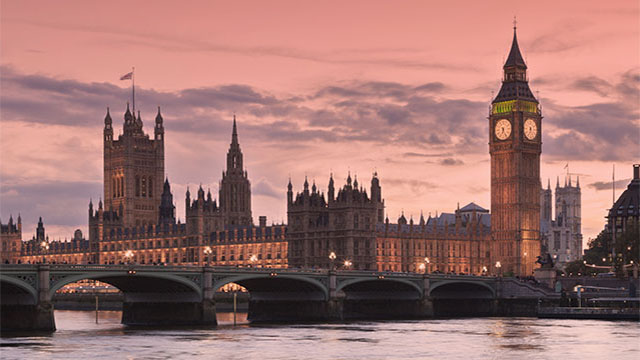Heralded by some as a second Meadowhall, the development of a shopping centre on the outskirts of Leeds is controversial. Mark Simmons looks at its possible effects on city-centre retail.
As the spring roses unfurl around Leeds in 1997, none is likely to bloom larger or attract as much interest as White Rose. Leeds’ first out-of-town shopping centre will open in Churwell, 4 miles (6km) to the south-east of the city centre. Like its horticultural cousins, the issues raised by the development of White Rose are thorny.
The 600,000 sq ft (55,740m2) scheme won planning consent from Leeds city council just before government policy turned in favour of inner-city regeneration. Last year, joint site owners Evans of Leeds and Yorkshire Water chose Land Securities to develop and manage the scheme, which, in turn, appointed Lunson Mitchenall as sole agent to find tenants for the 60-plus units.
Anchor tenants in the two large split-level flagship units are Debenhams (which already has a city-centre store) and Sainsburys Savacentre (which does not). Debenhams will move into 125,000 sq ft (11,6 12m2) and Savacentre into 137,000 sq ft (12,727m2). Construction is due to start soon.
Chesterton retail director John Hubbard is frank about the likely effect on the town centre: “There is no doubt that White Rose will have a mini-Meadowhall effect on central Leeds.” Suggestions that the population on the northern side of Leeds will not be drawn south are swiftly rebuffed. “The view that people won’t travel that far is absolute bunkum.”
Donaldsons’ Michael Francis points out that people will travel miles to go to Sheffield’s Meadowhall and Gateshead’s MetroCentre.
However, Francis distances himself from the Meadowhall analogy. As several agents point out, White Rose is half the size of Meadowhall and the MetroCentre. More important, says Nicholas Denton of J Trevor & Webster, the prime core in Leeds is stronger than Fargate in Sheffield ever was. “Sheffield was never in the position to react to Meadowhall in the way in which Leeds will be able to react to White Rose.”
Most commentators are agreed on one point: Leeds will suffer less than the towns to the south, along the M62 corridor. Wakefield, Halifax, Pudsey, Pontefract and Huddersfield are all tipped to lose out to White Rose. Michael Fawley of Erdman Lewis cites research prepared for Land Securities which forecasts a catchment population of 61,800 within a five minute drive-time. This rises dramatically to 1m people within a 15-minute drive-time.
Damian Kearns of Keith Cardale Groves predicts that it will be larger purchases that entice shoppers out of their local towns and away from the city centre.
However, the mix of tenants will not, at least when the centre opens, be sufficiently diverse to attract central Leeds shoppers in large numbers, claims DTZ Debenham Thorpe’s Peter Cooke. “We would be worried if White Rose was opening with the likes of John Lewis and Marks & Spencer, but the centre is targeted at mid-volume retailers like Etam, Burtons and Sears.”
White Rose is likely to delay rental growth in the city centre, according to Ben Middleton, partner at Knight Frank & Rutley. Current zone A rents in the city centre are more than 25% higher than the rumoured £100 per sq ft (£1,076.43 per m2) at White Rose.
Historically, central Leeds rents have been limited by the relatively small units – on average, 1,100 sq ft (102m2) – available in the prime area of Commercial Street and Lands Lane. Zone A rents here are estimated to be about £120 per sq ft (£1,291.71 per m2), although some agents take a more bullish view.
King Sturge’s Peter Heron says: “I don’t hold with the attitude that Leeds in-town market is a problem. While it is true that there is a shortage of larger units, this means that they don’t hang around when they do come up. Zone A rents of up to £145 per sq ft (£1,560.82 per m2) could be achieved on Commercial Street if a unit became available.”
In 1994, however, prime rents remained a matter of speculation as there was little letting activity in the prime area. Similarly, reports Jones Lang Wootton’s Alistair Russell, there has not been much investment action, although Leeds’ strong economy has attracted definite institutional interest. “Leeds is also underrented compared with other centres,” says Russell, “so investors feel that they are getting a bargain.”
But size may be more important to retailers than cost. Certainly, says Tim Smith of Grimley, multiple retailers are very particular when it comes to size and location, but they are more flexible about the cost.
And what they want still seems to revolve around Commercial Street and Lands Lane, rather than nearby shopping centres. “Leeds’ problem is that it has four shopping centres, none of which provides prime shopping,” says Francis.
One street that can provide larger units is Briggate. “The most important retail development is the semi-pedestrianisation of Briggate,” says Cooke. “Briggate previously divided the city into east and west. It is the single most important aspect in the regeneration of the city centre.” The changes, according to Cooke, had the immediate effect of improving Briggate as a whole – particularly the eastern side of the street. He estimates that zone A rents on Briggate west are at £90 per sq ft (£968.78 per m2), a 25% increase on the days when through traffic cut the street in half.
Improvements to public transport, such as the proposed Supertram network, could also strengthen the city centre. Although the initial route for the Supertram has won parliamentary approval, funding has yet to be resolved. Agents are cautious of the proposals, mindful of the disruption caused by the construction of Sheffield’s tram system. But passenger demand already seems to be there: a 1993 survey revealed that more than 50% of Leeds shoppers travelled in by public transport (see graph).
Whether more shoppers opt to travel by car when White Rose opens remains to be seen. But, for retailers, there will always be an element of swings and roundabouts. Hubbard cites the case of Burton: “Burton retailers felt that they had to go to Meadowhall, but found that they lost custom from their Rotherham and Sheffield town-centre branches.”










